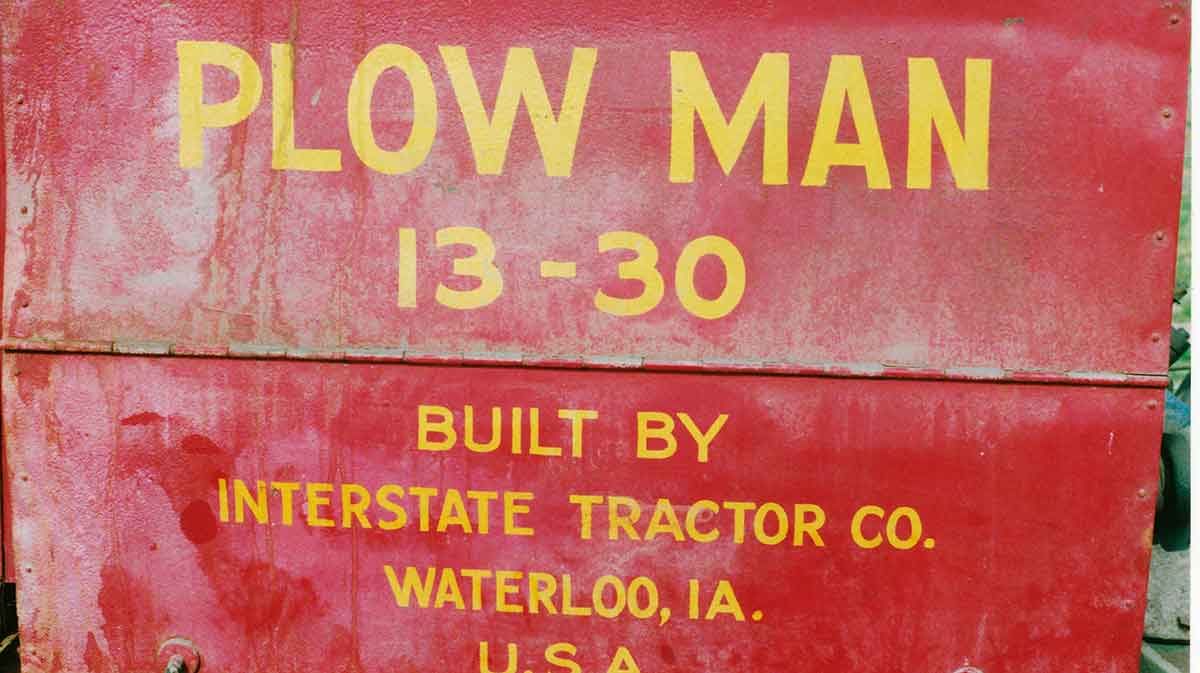The wartime sales growth for tractors was impressive. Production estimates suggest that America’s tractor manufacturers built about 7,000 tractors in the year the war started, but this had increased to more than 132,000 produced in 1918 when the war ended.
Expansion continued for two more years, reaching more than 203,000 during 1920.
The golden age of sales growth developed mainly on farms in America where tractors were replacing animal power and some steam engines, but there was also an increasing overseas demand, including exports to the UK to boost homegrown food production.
See also: Whatever happened to… the Ferguson Black Tractor?
A small contribution to America’s wartime tractor production came from a company established by Sandy McManus – a name that suggests a Scottish link.
McManus had previously worked for a specialist engine company supplying power units mainly for stationary equipment, but he was keen to expand into tractor production.
This was in about 1914, and it is not clear if his tractor ambitions were a chance idea or perhaps a shrewd perception of the sales growth the war would bring.
His tractor proposal appears to have caused a management disagreement within the company, and McManus left to start his own business which began small-scale tractor production in 1915.
The name of the new company was the Interstate Engine and Tractor Co, which suggested that the plans included engine manufacturing as well as tractors.
Production was based in Waterloo, Iowa, an industrial centre which would later become internationally known as the first production base for John Deere tractors.
Plow Boy
The first Interstate tractor was the Plow Boy, based on what were conventional design features at that time including power delivered to the rear wheels by unprotected ring gear drives that were exposed to stone damage.
Power output was listed as 10-20 using the American convention of indicating the horsepower available at the drawbar followed by the engine output.
Surprisingly for a company with engine production ambitions, Interstate chose to buy the power unit for its new Plow Boy tractors from another manufacturer: a four-cylinder engine supplied by Waukesha, one of the leading engine manufacturers in America at that time.
In spite of the increasing demand for tractor power, the Plow Boy achieved only a modest sales performance. This was not due to any obvious design fault, but Interstate was suffering from the intense competition that developed as many other first-time manufacturers were moving into the fast growing tractor market during the wartime period.
Power increase
The Plow Boy was soon joined by an additional model offering a modest power increase. This was named the Plow Man and it was given a power rating of 13-30, but apart from the extra power, the appearance and the mechanical features were similar to the original Plow Boy model.
In spite of offering customers a choice of two models, growth in Interstate tractor sales remained slow, and there are suggestions that the company may have been facing financial difficulties from about 1917.
This was the year when there was a reorganisation and the company name was changed to the Interstate Tractor Co, perhaps indicating that their engine production plan was abandoned.
A new version of the Plow Man tractor arrived in 1918, offering another modest power boost by using a four-cylinder Buda engine.
The guideline for power output indicated by the model number was 15hp at the drawbar and 30hp at the flywheel, but apart from the very small increase in engine power, the two Plow Man tractor models appear to have been basically similar and, surprisingly, both versions remained in production while the original Plow Boy tractor was no longer available.
The company introduced another name change in 1919 when it became the Plowman Tractor Co and the tractor name was modified from Plow Man to Plowman, developments that were unlikely to produce much of a sales boost.

Increased competition
Meanwhile, the end of the war meant the tractor sales surge would soon be ending, and an extra threat looming on the horizon was a further increase in competition pressure following the arrival of Henry Ford’s recently introduced Fordson tractor.
The efficient mass production methods and the price-cutting sales policy adopted by Henry Ford were highly effective, and they helped to put many of the smaller tractor companies in America and in the UK out of business.
While Interstate tractor production is said to have peaked briefly at just over 1,000 tractors in the company’s best trading year, the biggest one-year total from the Fordson factory was just over 100,000 tractors during the 1920s, helping to make it the most successful model the tractor industry has produced.
Having apparently made only modest financial progress during the wartime sales boom, and with the Fordson establishing itself as the industry leader, Interstate stopped making tractors in about 1920 or 1921.
For Interstate, the short production period and modest sales volumes mean that few of the Plow Boy and Plow Man or Plowman tractors have survived, and their rarity gives them a special interest among enthusiasts.


